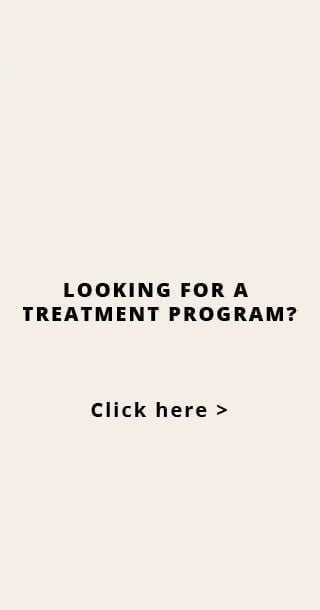Estimated reading time: 20 minute(s)
As per the National Institute on Alcohol Abuse and Alcoholism, 14.5 million people above the age of 12 years suffer from an alcohol use disorder. However, only 7.2 percent of them seek the treatment they need. Another 95,000 individuals who use alcohol die from complications associated with this disorder, making it the third leading preventable cause of mortality in the United States, following tobacco and poor lifestyle.
While there are many reasons why people may avoid treatment, many don’t seek help because they are not sure what to expect from these facilities. Knowing what every aspect of treatment includes so that they are always ready for each step with high motivation.
What Recovery Looks Like in the Best Alcohol Treatment Centers
All the best alcohol rehab centers begin their treatment process with an intake assessment. As a part of this assessment, clients undergo an interview where they answer several questions about their health and addiction. This intake process is integral to treatment as it helps experts curate individualized programs according to their specific psychiatric and physical needs.
Detox and Withdrawal
The first step in every alcohol treatment program involves detoxification. Detox is undoubtedly the most difficult step as it involves overcoming the physical aspect of addiction while tackling the uncomfortable withdrawal symptoms. Some of these withdrawal symptoms include the following:
- Shakiness
- Headache
- Insomnia
- Nausea
- Rapid or irregular heartbeat
- Fever
- Anxiety
- Hallucinations
- Sweating and clamminess
- Seizures
- Depression
- Nightmares
- Agitation
- Mood swings
Among the symptoms mentioned above, fever, hallucinations, and seizures are the most dangerous and only appear in a serious withdrawal condition called Delirium Tremens. Delirium Tremens is a rare yet potentially life-threatening condition that requires professional support for safe management. A medically-supervised detox at an alcohol addiction center successfully manages all these symptoms while ensuring patient safety and comfort. The process typically lasts for 7 to 10 days but may vary depending on each individual.
Rehabilitation and Therapy
Once a person completes detox, they enter the rehabilitative state, where they undergo several therapies. These therapies are of different types and based on evidence-based approaches. Some examples of these therapies include the following:
- Cognitive behavioral therapy: This therapy helps people identify and get over their negative addictive patterns with the help of a therapist.
- Trauma-focused CBT: This type of CBT considers trauma and ensures that people identify the connection between their trauma and the associated addictive behavior.
- Dialectical behavioral therapy: Through this therapy, people can manage alcoholism and other disorders through motivational enhancement and behavioral skills.
- Interpersonal therapy: Interpersonal therapy helps individuals build a social network that helps them overcome their loneliness, depression, and other emotional factors driving their addictive behaviors. At the same time, this therapy also improves their power to resist a relapse.
Education & Aftercare
People who successfully finish detox and rehabilitation may feel like their recovery plan is over. However, all the best alcohol treatment centers acknowledge recovery as a life-long process and provide clients with a chance to indulge in aftercare programs and education. These programs allow them to transition smoothly to their everyday lives without hiccups or relapses.
A general aftercare plan allows clients to learn about different resources available in the community to support post-treatment recovery. Moreover, these resources also allow them to acquire coping and motivational strategies that help them practice abstinence for years to come. One of the most prominent of these resources includes a support group called Alcoholics Anonymous, which helps them manage cravings and desires for alcohol while teaching them strategies to establish support groups. Another element of aftercare is the alumni program that connects fresh graduates with older ones. This helps these recovering alcoholics seek support from each other and sustain healing.
A Typical Day in an Alcohol Treatment Center
Clients who are in a residential program typically follow a structured daily routine. This concept of going through a consistent routine will help them recover with time. Mentioned below are examples of how a typical day in rehab goes. Note that slight variations may occur depending on the intensity and duration of addiction.
Mornings
Each client wakes up at a set time every morning. The appointed nurses give out the medications to the ones who require them. For example, those actively going through a withdrawal may get medications to manage the symptoms. Breakfast is served around 8 pm, after which they attend their first therapy session. Following this session, clients get time to journal, reflect, or practice any skills they have acquired.
Afternoons
Afternoons begin with lunch, followed by another therapy session, such as individual therapy. After attending the afternoon session, clients may get some free time to do whatever they wish to, such as attending the fitness center or going for a swim. Alternatively, some prefer attending an educational course on balanced nutrition, addiction, and general mental health.
Evenings
In the evenings, clients attend dinner, followed by another group session, allowing them to reflect on their progress. These group sessions also help them discuss how they feel about their recovery. Most rehabs also have a fixed time for lights out, after which they go to bed.
FAQs
Are clinics for alcoholism effective?
Rehab programs for alcohol can be an effective platform to help clients recover as long as they are willing to change. These clinics have highly-skilled experts who assess each client individually and make a treatment plan that best suits their circumstances.
What are your rights as a patient in an alcohol treatment center?
All the best alcohol treatment centers ensure that every patient under their care has certain rights that they must be familiar with. These rights include:
- The right to participate in your care
- The right to get access to your patient records
- The right to actively participate in their own treatment decisions
- The right to get equal treatment without any abuse or discrimination
- The right to be informed of their benefits and any risks to treatment
How long does a program at an alcohol addiction treatment center last?
When answering this question, it is essential to note that every patient is different. The answer differs varies on many factors, such as current mental and physical health, the intensity of addiction, the duration of addiction, and more. Some clients stay in treatment for up to 30 days, while others may need treatment for up to 90 days.
What if someone starts reusing alcohol during treatment?
The consequences of reusing alcohol during rehab depend on the program. Some treatment centers may dismiss you, while others may help you refocus on recovery as soon as possible.
Is it possible to leave treatment facilities for alcoholism?
The ability to leave rehab before treatment ends depends on the program’s rules. Most rehabs allow voluntary clients to leave whenever they feel like it; however, those who have been ordered by the court or are mentally unstable may not be allowed to leave without a doctor’s approval.


